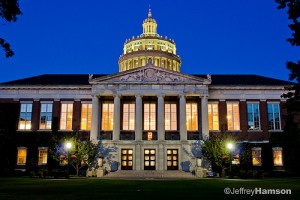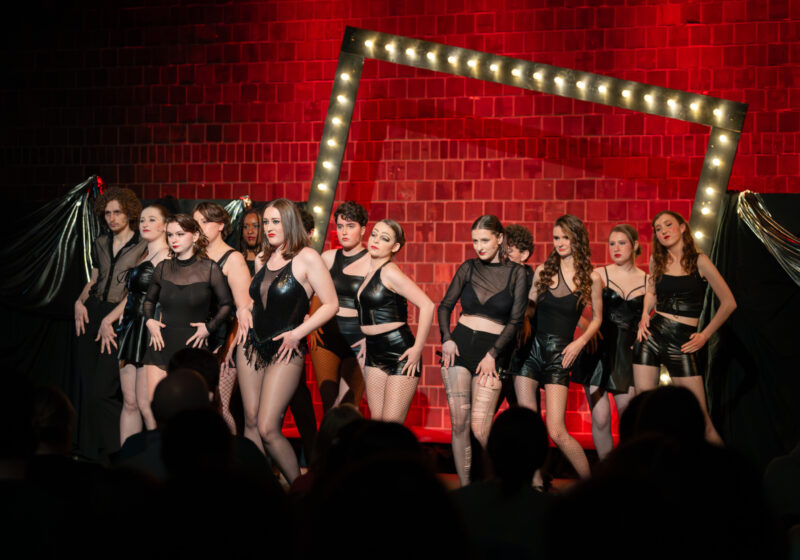Pick up any publication sent out by this University and there’s little doubt the pristine and idyllic Rush Rhees Library will be on its cover — the symbol of all that is collegiate and “ever better,” backed by the blue skies and flanked by the green foliage that defines the city of Rochester.
Heaving open the heavy wooden doors yields a similar result. The elaborate portraits of the school’s founders, the spotless marble staircases and the classic Romanesque sculptures embody an institution that prides itself on both a commitment to academic excellence and a desire to remember the school’s roots and oldest traditions.
In essence, Rush Rhees paints a picture of the college that’s presented in every admissions pamphlet. Students here are working hard and going places, insists the school, and if you want to go places, you should be here too. It’s what parents expect to see. It’s what high school seniors dream about. And it’s difficult to argue this University offers anything less: you can hear a pencil drop to the floor in the Great Hall, and even the most hushed of whispers in the Periodical Reading Room garners glares.
One of the better-kept secrets at the University is ironically located inside every dean’s favorite monument to learning. Ignore the staircase and instead bear left when you enter Rush Rhees, and you will come face to face with one of this school’s most sacred of treasures: the Welles-Brown Room.
Though giant marble pillars greet you and more proud old men gaze out from century-old canvases, make no mistake — this is no cousin to the Great Hall. Gone are the endless lines of rock-hard wooden chairs and the carpet-less floors. Armed, luxurious chairs and lengthy couches take their place. One’s footsteps don’t echo in this small, homey place. Smell is by far the more immediate sensation, as the musty but not overbearing scent of ancient-yet-untouched literature floods the room.
Physical contrast is not the only thing separating the Welles -Brown from its neighbors upstairs. Perhaps the first thing a prospective student (and without a question, the student’s mother) wonders when he or she enters this room is: Am I still in a library? The couches are easily the most popular piece of real estate available, and it’s duly noted that neither the furious scribblings on a notepad nor the endless pitter-patter of fingers on a keyboard emanate from them.
Rather the soft, steady breathing of a slumbering college student escapes. Those not fortunate enough to be spread out on a couch create their own places of solitude and rest — two armchairs pushed together to form a small cranny to curl up in, or simply putting one’s feet up on the tables nearby (which, as if the library’s planners meant for it to be the case, happen to be the perfect height for this kind of use).
With the obvious exception that it exists in a library — and thus must be respected like one in terms of noise level — the Welles-Brown Room is more akin to the lounges of freshman halls than to any of the library’s alternative study areas. By peeking into the room during a tour, a future freshman may gain the true knowledge about what separates high school from college. Sleep is a given back home, attainable on demand. Didn’t get much sleep over the weekend? No problem, just go to bed earlier Monday night. In the years that follow, however, the same practice is a luxury — the student will take it wherever and whenever he or she can get it.
By no means is it being implied that college students are lazy, or that the Welles-Brown Room encourages such behavior. On the contrary, the room is but a convenience for hard workers who simply need to take some time out. Close enough to classrooms so that the student doesn’t have to sprint to make it to lecture, the room is also far enough away that there’s a clear and definite line between studying and recovering. The Welles-Brown Room is a refuge for the hard worker — a mid-day bunker in the heat of a full day’s work.
Bernstein is a member of the class of 2013.




